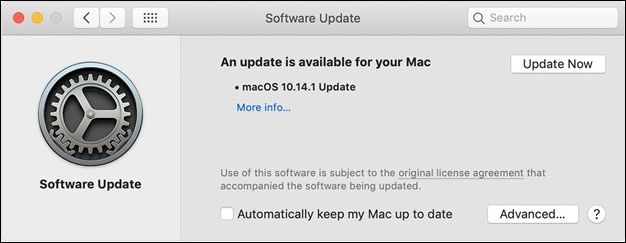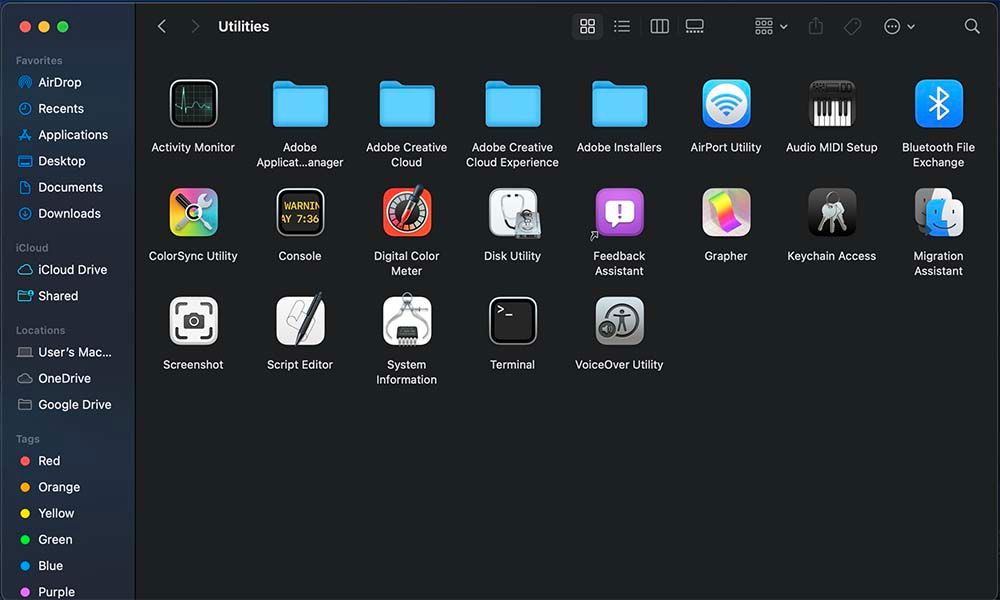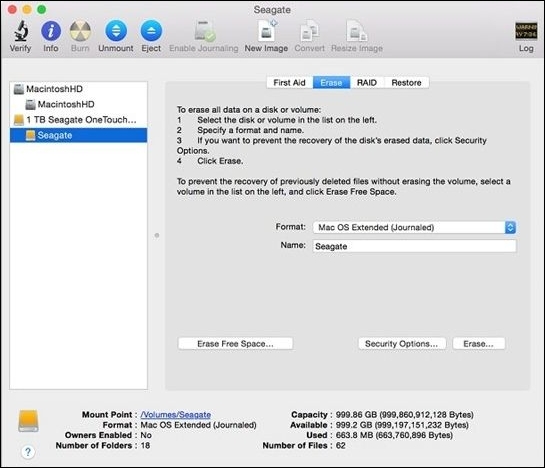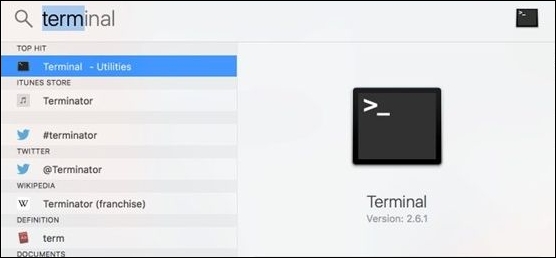It's annoying when critical processes, such as file operations or backups, are interrupted by an error on a Mac. Error code 100060 is one such problem that pops up without warning and stops some tasks from finishing. This comprehensive guide will teach you how to fix Mac error code 100060 by walking you through each stage of the process.
We will take you through the troubleshooting steps, including disk space cleansing, updating Mac, and external drive repairs. If you follow these methods, you should be able to fix Mac problem number 100060 and have your computer working normally again.
What Does Error Code 100060 Mean
The error code 100060 is a typical problem that Mac users come into, and it may cause a variety of tasks to become corrupted. This error message, which might show while trying to conduct file operations such as copying, relocating, or deleting files on Mac, has been reported to appear often by users.
It indicates that the system ran into an unforeseen mistake while performing the task, which prevented it from being completed successfully. The error code 100060 may appear for several causes. The first step toward effectively resolving this mistake is understanding its significance and the various factors that contributed to it.
Common Causes of Error Code 100060 on Mac
It's not always clear what causes Mac OS X error 100060. Identifying and addressing the most prevalent contributing factors might facilitate problem solutions. The following are some common causes of error 100060:
💾Insufficient Disk Space: Inadequate space on the disk, especially when deleting files Mac but still no space, which means your Mac's disk drive runs out of free space; it can cause error code 100060 to appear when you try to work with files.
⚠️Incomplete File Uninstallation: Error number 100060 might be caused by incomplete file removal or a previously deleted file's remains on the system. Incorrect file removal that causes the suddenly disappeared files on Mac or error code 100060.
🍏Outdated Software: Using out-of-date or mismatched types of macOS, which can update via Mac Software Update, can lead to problems that can lead to error code 100060 when working with files.
😫Excessive Trash and Pointless Files: Error number 100060 might be caused by a congested hard disk overrun with garbage files and irrelevant data, making it difficult to access files.
Finding the source of the problem and effective remedies might be facilitated by recognizing these frequent factors. The following sections will address and correct Mac error code 100060.
3 Quick Solution to Fix Error Code 100060 Mac
If you're using a Mac and have run across the error code 100060, there are a few easy fixes you may attempt. The following are the suggested changes:
Fix 1. Clean Up Disk Storage
Clear your Mac's hard disk to begin. To free up space for file operations, erase unnecessary programs, files, and garbage.

Delete Files Mac But Still No Space: 4 Fixes
This article will help you to get rid of the problem of deleted files on Mac but still no space. Read more >>
Fix 2. Reduce the Size of Large Files and Retry
If you transfer several huge files and run into the issue, you may want to attempt trimming down the file sizes. You may either reduce the size of the files by utilizing the compression tools already installed on your system, or you can divide them into more manageable chunks before retrying the transfer.
Fix 3. Disable Security Applications
Turn off your Mac's antivirus and other protection applications temporarily. Error code 100060 is generated when certain programs conflict with file operations. Temporarily turning them off may assist in figuring out whether they're the problem.
These simple fixes target the most prevalent reasons for Mac error number 100060, which means they have a good chance of fixing the problem. After these steps, you may go to the remaining options if the issue persists.
Advanced Fix 1. Update macOS to Fix Error Code 100060
Updating macOS fixes various errors, including 100060. Mac OS X updates fix problems, speed up the system, and improve third-party device compatibility. Follow the steps below to upgrade macOS:
Step 1. Select "System Preferences" from the Apple menu in the top left corner.
Step 2. Check Mac Software Update for updates.
Step 3. Choose "Update Now" to begin if there is an update available.

Step 4. Follow on-screen instructions to complete the upgrade.
Error number 100060 might be caused by a software problem corrected by installing the latest macOS version. Maintaining an up-to-date OS enhances your Mac's performance and reliability and reduces the likelihood of encountering problems.
Before updating your Mac, maintaining a constant internet connection is crucial for the duration of the update. Ensure there's enough space on your hard drive for the upgrade.

Why Can't I Update My Mac? Fix It and Update Mac to The Latest macOS Big Sur
This article lists all the possible causes that prevent you from upgrading Mac via Apple software update, macOS installer, or resetting macOS. Read more >>
Share this article on social media to help others learn how to fix the error 100060 on Mac.
Advanced Fix 2. Repair SD Card to Fix Error 100060
If your Mac reports error 100060 for an SD card or external hard drive, act promptly to prevent data loss. Before repairing the storage device, retrieve its data. You can get your data back from a damaged SD card or external hard drive with EaseUS Data Recovery Wizard for Mac.
With the professional EaseUS recovery tool on Mac, you can quickly recover lost and deleted data with 3 steps. Check out the steps below to recover your data:
Step 1. Select the drive to be scanned
In the main EaseUS Data Recovery Wizard window, there will be a list of the drives connected to your Mac. Select the drive you need to recover lost/deleted files from, and click the "Search for lost files" button.
Note: Before data recovery, you'd better click "Disk Backup" from the left sidebar to create a backup of your Mac to avoid further data loss. After backing up, the software can recover data from the Mac backup, and your computer can wirte new data again.

Step 2. Select your lost data/files
EaseUS Data Recovery Wizard for Mac will immediately scan your selected disk volume and display the scanning results on the left pane. You can sort the results to find the wanted files if you are looking for certain files.

Step 3. Recover lost/deleted data
Once you have found the desired files, preview the files and then click "Recover" to begin the recovery of your deleted/lost Mac files.

After retrieving your essential data, you should format SD card on Mac or external hard disk. If the file system has been corrupted, formatting will fix it and eliminate the error message. A backup before formatting is important since it will delete everything on the storage drive. After backup, you can do the corrupt SD card recovery on Mac.
To fix a corrupted SD card or external hard drive file system, format the device. You may repair your SD card or external hard drive by following these steps:
Step 1. Connect your Mac to the SD card or external hard drive.
Step 2. Pull up the Disk Utility. It's located in Spotlight or Applications/Utilities.

Step 3. Locate the linked storage device in Disk Utility's left sidebar.
Step 4. Click "Erase" after selecting the device.
Step 5. Format the storage drive (exFAT vs Mac OS Extended).

Step 6. Identify the formatted device.
Step 7. Click "Erase" after checking the settings.
Step 8. Click the "Confirm" button when asked.
Step 9. Keep waiting for the formatting to finish. Once complete, the SD card or external hard drive should be functional again.
2 Tips to Avoid Mac Error Code 100060
In addition, here are two effective ways to avoid Mac error code 100060, including using an external USB adaptor and transferring files with the Terminal command.
Use External USB Adaptor
If you have trouble with error code 100060 on your Mac every time you try to transfer files from an external device, an external USB adapter may be the answer. The adapter is a go-between for your Mac and the peripheral, ensuring a solid connection. Here's how to connect an external USB hub:
Step 1. Plug the extra gadget into the USB adapter. To use the adapter with your Mac, plug it into a USB port.
Step 2. Check that the link is steady and safe. Retry sending the file.
Error number 100060 is often avoided by using an external USB converter to resolve connection problems between your Mac and the external device.
This arrangement greatly benefits SD cards, external hard drives, and other USB-based storage devices. If you use this technique, file transfers will be more reliable, and errors like 100060 will be less often.

USB Flash Drive Not Showing Up on Mac, Why and How to Fix
This article discusses 10 solutions to help you fix the problem of USB flash drive not showing up, recognizing, or detecting on Mac. Read more >>
Transfer Files with Terminal
If Mac problem 100060 prevents file transfers, try Terminal, the command line interface. Transferring files is only one of the many helpful operations the Terminal's command line interface can accomplish. Follow the steps below to send files using Terminal:
Step 1. Type Terminal into Spotlight to open Terminal.

Step 2. Use "cd" followed by the entire path to the source file directory.
Step 3. Use "cp" and the directory's complete path to move files.
Step 4. Use "cp" with the names of several files or a wildcard (*) to transfer them all.
Step 5. Press "Enter" after typing the command to begin the file transfer.
Ensure you can enter the original and final folders with the right permissions. Avoiding mistakes requires using the right syntax and checking the paths again.
Also, the Mac error code 8076 is reported by many Mac users while doing common file operations like renaming or relocating files and folders. Just like the error code 100060 on Mac, using the Terminal command can solve this issue. Check out the article below to fix it.

What Is Error Code 8076 on Mac | 5 Proven Methods to Fix It
This article discusses what is error code 8076 on Mac and introduces 5 ways to fix it. Read more >>
Conclusion
The macOS error number 100060 is a common problem that prevents you from accessing your files. However, you can fix this mistake and get your Mac back to normal by following the steps in this article. You may fix error number 100060 by following the detailed remedies provided here, which include clearing up disk space, shrinking huge files, turning off security software, connecting an external USB adapter, upgrading macOS, and fixing SD cards and external hard drives.
You may repair the issue and protect your data by following the instructions and using trusted software like EaseUS Data Recovery Wizard for Mac. Don't let the 100060 issues prevent you from using your Mac; find a solution now.
Error Code 100060 on Mac FAQs
Here are some questions people frequently ask that are related to Mac error code 100060:
1. What is Mac error code 100060?
When Mac users try to conduct a file action such as copying, renaming, or erasing files, they could get the error 100060. Various circumstances, such as insufficient disk space, file system faults, or program incompatibilities, might lead to this error message.
2. How do I fix error code 100060 on Mac?
Cleaning up disk space, shrinking huge files, turning off security software, connecting an external USB adapter, upgrading macOS, and fixing SD cards and external hard drives are just a few of the things you may do to solve error number 100060 on a Mac. To solve each problem, go to the tutorial for detailed instructions.
3. Why does the system prompt, "The operation can't be completed because an unexpected error occurred (error code -50)"?
"The operation can't be completed because an unexpected error occurred (error code -50)" refers to error code 100060. It indicates a file operation error due to difficulties in disk space, file system, or security program.
4. How do I fix the error code on Mac?
Mac users may resolve the problem code by following this instruction. Clean up disk storage, minimize huge files, deactivate security software, utilize an external USB adapter, update macOS, or repair SD cards and external hard drives as needed.
Was This Page Helpful?
Brithny is a technology enthusiast, aiming to make readers' tech lives easy and enjoyable. She loves exploring new technologies and writing technical how-to tips. In her spare time, she loves sharing things about her game experience on Facebook or Twitter.
Related Articles
-
How to Load Old Cyberpunk 2077 Saves on Xbox
![author icon]() Rel/2024-03-15
Rel/2024-03-15 -
PC Not Working Properly? Try A Fresh Install Windows 10
![author icon]() Jaden/2024-01-11
Jaden/2024-01-11 -
How to Turn Off Sleep Mode on Mac/MacBook Air/iMac
![author icon]() Brithny/2024-01-11
Brithny/2024-01-11 -
How to Empty Trash on Mac [macOS Sonoma Applicable]
![author icon]() Cedric/2024-02-23
Cedric/2024-02-23
EaseUS Data Recovery Services
EaseUS data recovery experts have uneaqualed expertise to repair disks/systems and salvage data from all devices like RAID, HDD, SSD, USB, etc.
